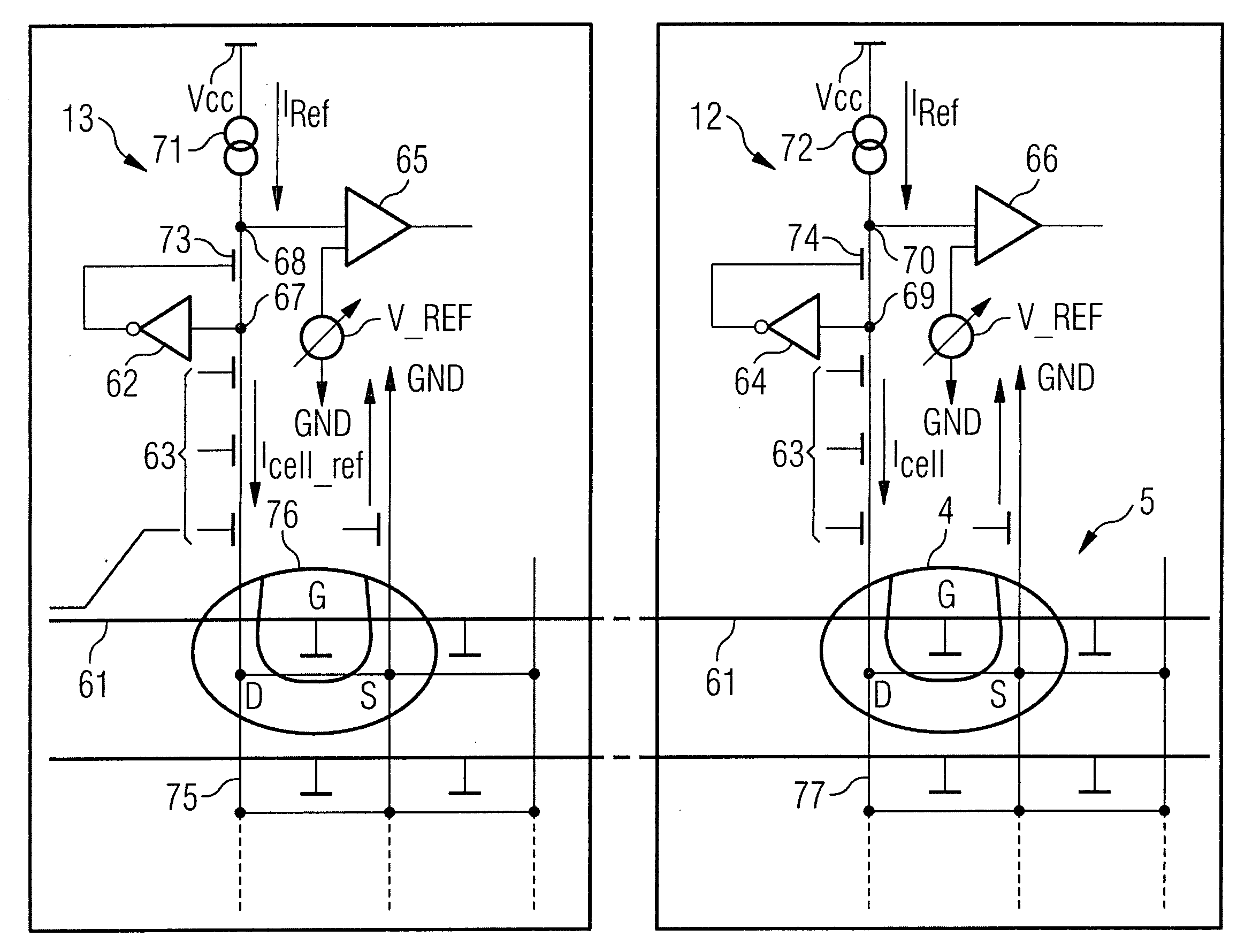Reference scheme for a non-volatile semiconductor memory device
a reference scheme and memory device technology, applied in static storage, digital storage, instruments, etc., can solve the problems of multi-bit memory cells and significant reduction of windows
- Summary
- Abstract
- Description
- Claims
- Application Information
AI Technical Summary
Benefits of technology
Problems solved by technology
Method used
Image
Examples
Embodiment Construction
[0050] Embodiments of the present invention and embodiments will be described more specifically with reference to the drawings. In the figures, identical or similar components are denoted by identical numerals and their description will not be repeated.
[0051] Non-volatile semiconductor memory devices that are electrically re-writable and erasable are referred to as EEPROMs or NROMs as mentioned previously.
[0052]FIG. 1 is a block diagram showing a configuration of a flash memory device 1 that uses NROM memory cells for storing data. The memory device comprises a memory area 2 and a circuitry area 3. The memory area 2 comprises a memory array 5 with a plurality of memory cells 4. The memory cells are arranged in columns and rows and, therefore, constitute a matrix. Each of the memory cells can be selected by means of a column decoder 8 and a row decoder 9. Both decoders are connected to an address bus 10, which is also connected to a control unit 11 of the circuitry area 3. The cont...
PUM
 Login to View More
Login to View More Abstract
Description
Claims
Application Information
 Login to View More
Login to View More - R&D
- Intellectual Property
- Life Sciences
- Materials
- Tech Scout
- Unparalleled Data Quality
- Higher Quality Content
- 60% Fewer Hallucinations
Browse by: Latest US Patents, China's latest patents, Technical Efficacy Thesaurus, Application Domain, Technology Topic, Popular Technical Reports.
© 2025 PatSnap. All rights reserved.Legal|Privacy policy|Modern Slavery Act Transparency Statement|Sitemap|About US| Contact US: help@patsnap.com



